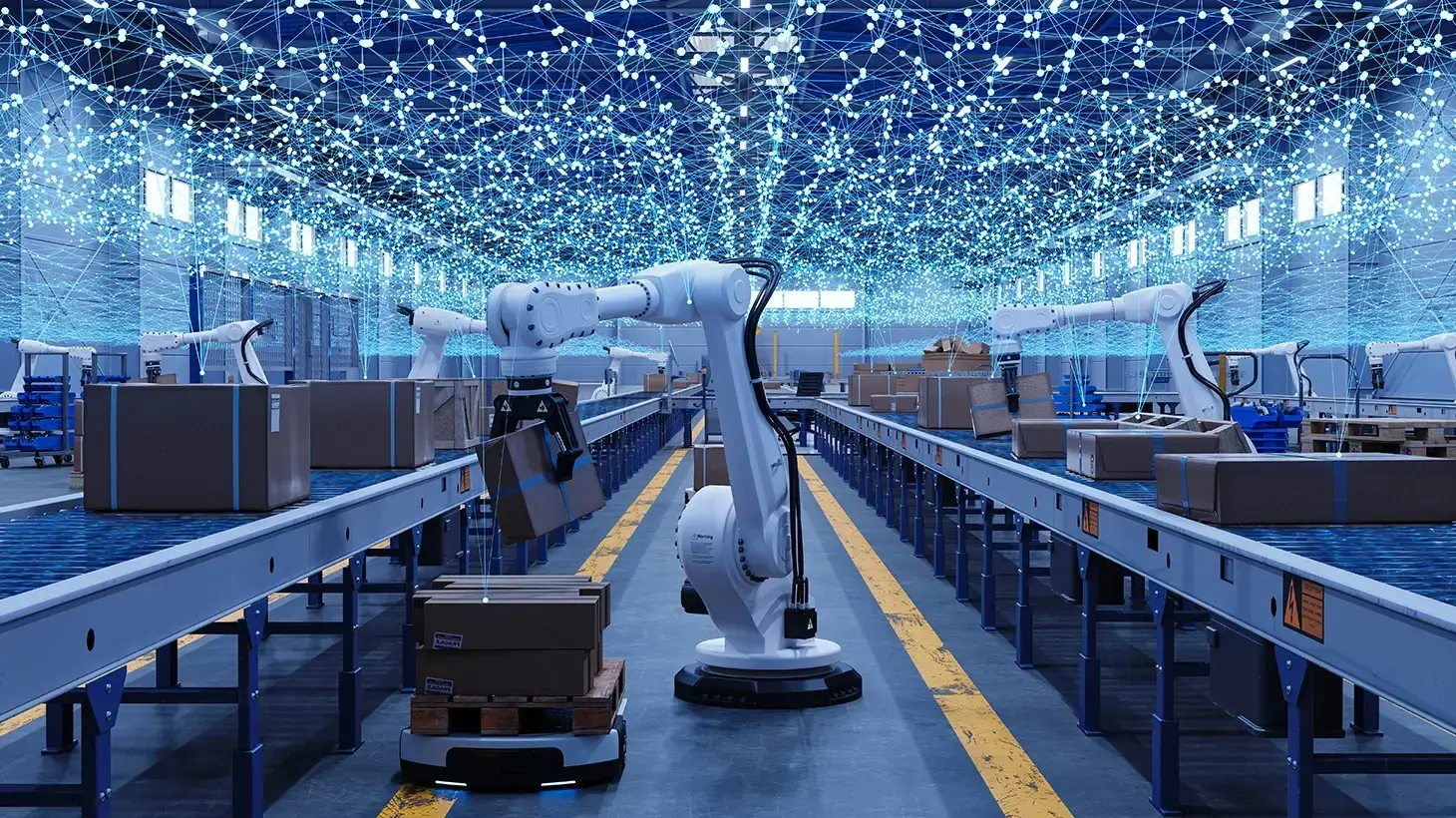From Silos to Synergy: The Future of Logistics
- October 6, 2025
- Manhattan Staff
- Read time: 3 minutes

Key Takeaways
- Unification Is Essential for Modern Supply Chains: Moving from siloed systems to a unified platform helps companies improve efficiency, eliminate duplication and respond in real-time to market changes. It creates true collaboration and optimization across all supply chain functions.
- Legacy Systems Are a Major Barrier: Transitioning to unified, cloud-native solutions simplify IT architecture and reduce maintenance, allowing businesses to focus on innovation and core capabilities.
- Continuous Improvement and Agility Are Critical: Companies must adopt a mindset of constant optimization and agility. That means leveraging a unified platform to quickly adapt to disruptions and take advantage of new advancements in supply chain technology.
For decades, one of the biggest challenges facing supply chains has been fragmentation. Distribution, transportation, labor, and yard management often operate in silos, resulting in inefficiencies, duplicated effort and missed opportunities – all leading to lost revenue. At Momentum 2025, Manhattan’s annual customer conference, this challenge was front and center in a panel discussion which included Adrian Gonzalez, leading industry analyst and President of Adelante SCM, Blake Coram, Director of Product Management at Manhattan, and Adam Green, Head of Programs, Supply Chain Operations and Transport and Ian Westlake, Head of Technology - Supply Chain Logistics at Coles Group. Their conversation highlighted why the push for supply chain unification is gaining momentum and what companies can do to get started on this journey.
Why Silos Still Exist
Despite decades of technological innovation, most supply chains remain partially fragmented. Gonzalez started this discussion by highlighting that in 2022, a survey of logistics executives revealed that only 16% of companies described their supply chain processes as “very unified or synchronized.”
Why is unification still rare? In short, because of legacy technology. Over the years, most businesses invested in best-in-class applications for transportation, warehousing, or labor. Each solution excelled in isolation but struggled to communicate seamlessly with the others. The result? Integration projects that are costly, fragile and ultimately ineffective.
The Unification vs. Integration Debate
One of the most important distinctions made during the panel was the differentiation between integration and unification.
As Coram explained, integration means connecting systems so they can exchange data — but each still runs independently. Transportation management handles routing, warehouse management deals with execution, labor manages workforce planning, and so on. They may share information with each other, but they don’t collaborate.
Conversely, unification is about building a single platform where applications work together natively and every function – whether transportation, warehouse or yard – can communicate in real time without the burden of maintaining integration code. This enables true optimization across the supply chain.
Optimization in Action
What does unification look like in practice? Coram shared two compelling examples:
- Yard Management: A traditional yard management system assigns a trailer to an available dock based on simple eligibility rules. A unified yard system goes further by understanding what’s inside the trailer, how goods will be put away, and selects the optimal dock to minimize travel time inside the warehouse.
- Transportation Planning: Instead of simply planning shipments based on volume or weight, a unified system knows exactly how the warehouse will pick, pack, and stage goods. It plans transportation based on real-world execution, ensuring greater accuracy and efficiency.
In both cases, the power lies in leveraging the collective intelligence of multiple systems working as one and unlocking greater efficiencies.
The Coles Perspective
For Coles, a leading Australian grocery retailer, unification is not just about efficiency, it’s about succeeding in a fast-moving market. Adam Green highlighted the problems created by fragmented systems: duplication of effort, delayed updates, and inflexibility when responding to sudden changes. With a unified platform, processes such as notifying the transportation team after loading a trailer happen instantly and automatically, rather than relying on delayed batch updates. This is especially important when dealing with perishable products.
From a technology perspective, Ian Westlake pointed out that siloed systems also bring mounting complexity: different servers, databases and operating systems all needing maintenance, security and upgrades. In a unified, cloud-native world, businesses are freed from those burdens, enabling greater focus on their core capabilities. Seamless upgrades and continuous access to new capabilities allow companies like Coles to stay current without disruption and offer their customers incredible shopping experiences.
Agility in an Uncertain World
The pandemic underscored the importance of adaptability. Businesses had to pivot quickly in response to shifting demand, supply shortages and new regulations. Legacy systems, with their rigid integrations and slow upgrade cycles, made being nimble difficult. In contrast, unified solutions deliver continuous innovation.
With Manhattan Active® solutions, for example, new features are delivered every 90 days, with no downtime. This means companies can not only keep pace with change but also take advantage of the latest advancements in optimization and automation.
As Coram put it, unification is as much about speed to innovation as it is about day-to-day efficiencies.
Building the Business Case
Transitioning to a unified supply chain requires investment, and many companies start by evaluating systems separately. Coles did just that with transportation management (TMS) and warehouse management (WMS). But the real value emerges when these systems are considered together – as one offering.
For example, by unifying TMS and WMS, Coles expects to gain precise visibility into costs at the pallet level, linking each shipment directly to the labor and resources involved. This level of detail and accountability would be impossible with siloed systems.
Getting Started
The important question - how should companies begin their journey? The panelists offered several key learnings:
- Don’t go “like-for-like” - Simply replacing old systems with new ones that replicate the same siloed processes is a wasted opportunity for real transformation.
- Adopt a continuous optimization mindset - Unification isn’t a one-time project, it’s an ongoing journey. Companies should establish centers of excellence to evaluate and adopt new features as they are released.
- Consider the overall business - Unification delivers IT benefits like simplified architecture. But the bigger prizes are more business agility, faster responsiveness, greater optimization, and higher value to customers.
- Eliminate duplication - As Green noted, anywhere you currently rely on manual “swivel chair integration” or fragile system handoffs, there’s an opportunity for unification.
The Road Ahead
Unification represents a fundamental shift in how supply chains operate. It’s not just about modernization; it’s about rethinking the way work gets done. For retailers like Coles the benefits are clear - it offers a pathway to greater efficiency, resilience and responsiveness. As Westlake observed, unification is not “set and forget.” It’s a constantly evolving process, one whose benefits will continue to grow as new applications and capabilities are added.
In conclusion, the message from the panel was clear: the future of supply chains lies in breaking down silos and embracing unification. Companies that start this journey now will be better positioned to thrive in an unpredictable world.





